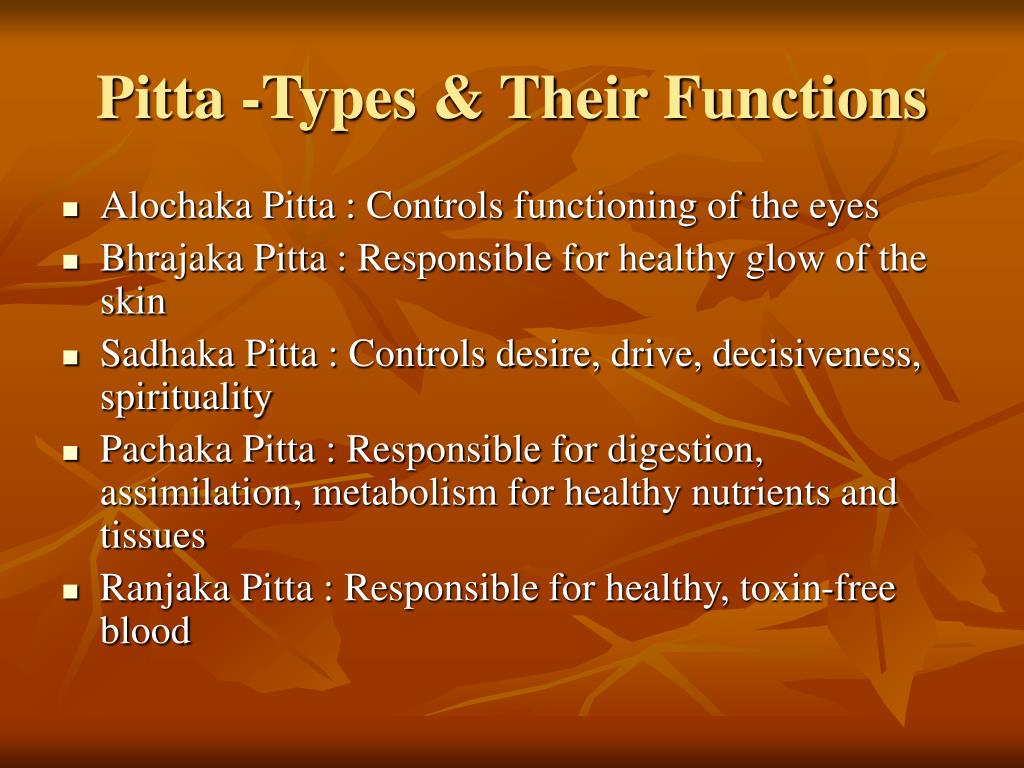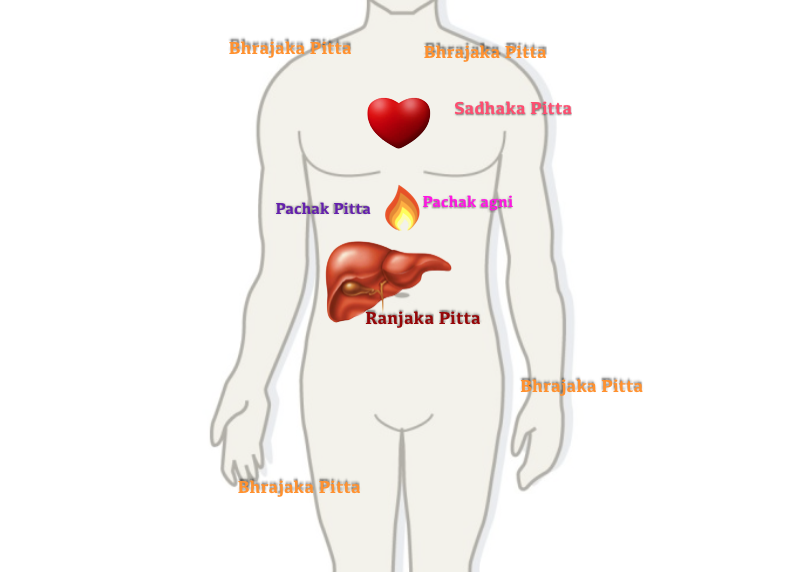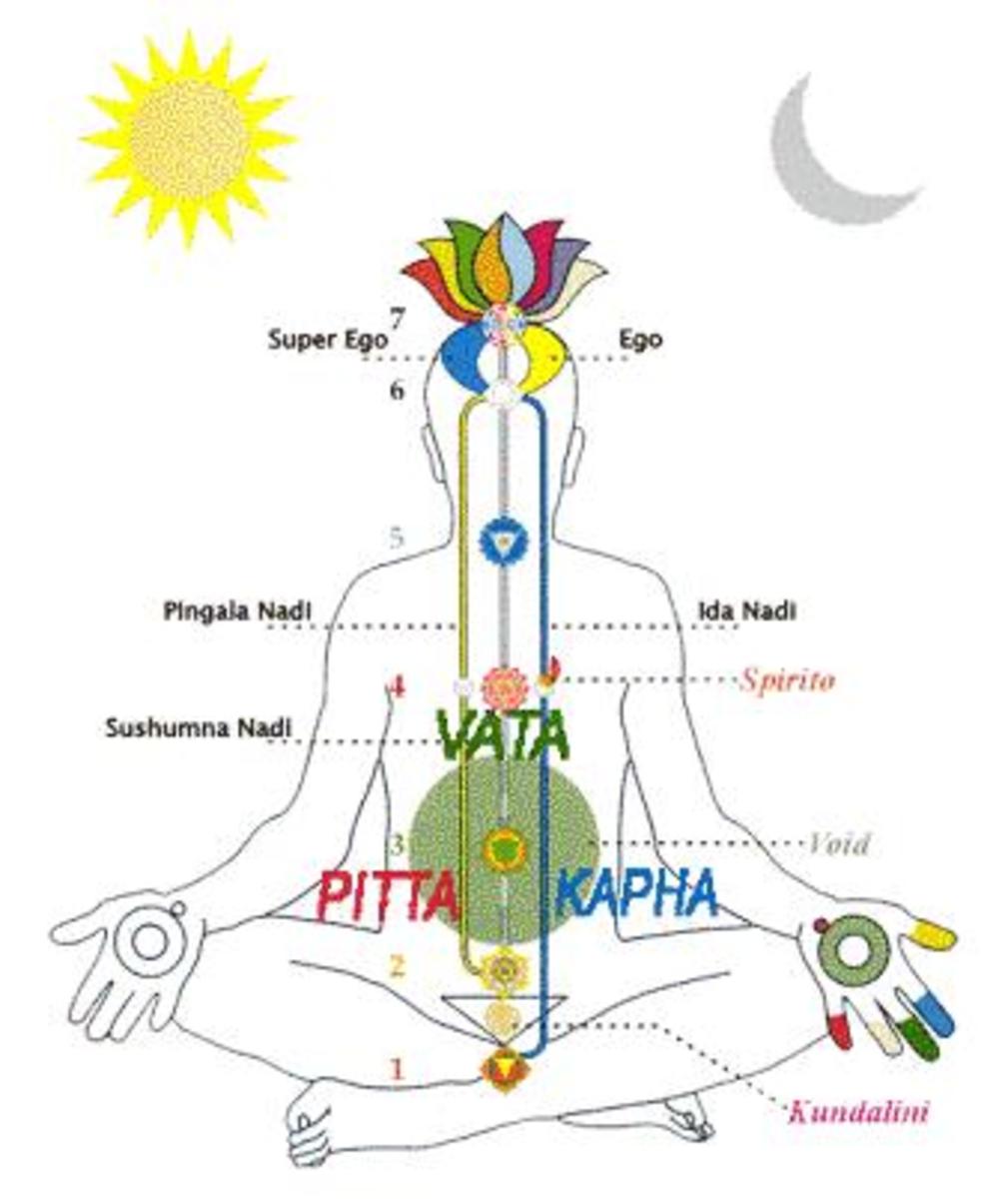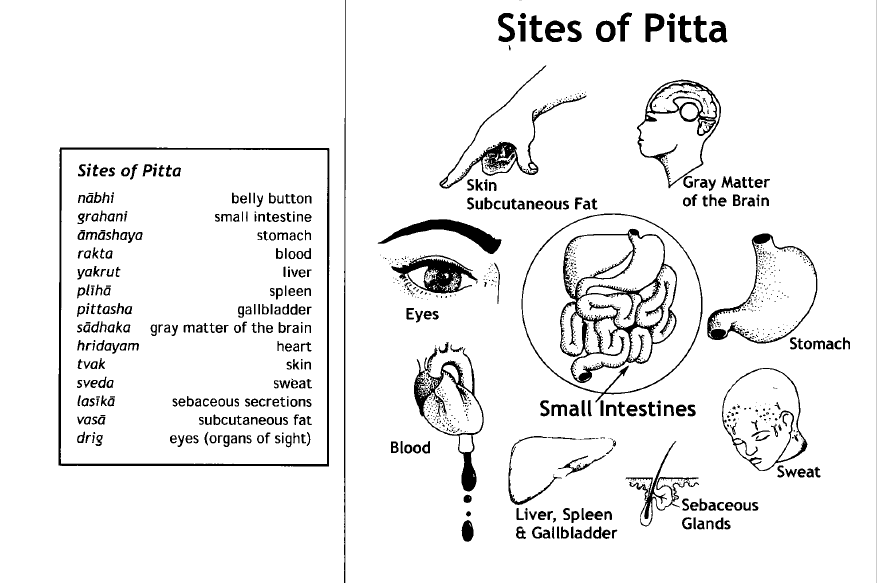
What Is Pitta Called In English? Called in English
In English, Pitta is roughly translated as "fire", as it shares characteristics with the element of fire, such as heat, light, and transformation. A balanced Pitta dosha is essential for good health, and Ayurveda provides several methods for balancing Pitta and maintaining overall well-being.. Pitta is present in various organs of the.

Pitta Dosha / Ayurvedic Type Diet, Tips, Characteristics,
Foods to Avoid or Reduce Pitta Dosha Precautions Has anyone ever told you, "You're so pitta?" Not sure what it means? Pitta is one of three main "doshas" in Ayurveda. In a way, it's kind of like an ancient system of understanding (and working with) your body and personality type. If Ayurveda medicine is new to you, you're not alone.

About Pitta
Article wellness:digestion Understanding the 5 Subdoshas of Pitta According to Ayurveda, the body is governed by three different elemental characteristics, or doshas: Vata (associated with wind and air characteristics of the body) Pitta (associated with fire and water characteristics of the body)

English Vocabulary Internal Organs of the Human Body Human body vocabulary, English
What Is Pitta? | Ayurveda Explained Watch on What Ayurveda Knows About You While there is undoubtedly no one quite like you out there, it is remarkable how accurate Ayurveda can be in predicting who we are—based simply on the broad strokes of our constitutions.

PPT . PowerPoint Presentation ID29014
Pitta literally means "fire", but is defined by an imbalance of oily, sharp, hot, light, sour, spreading, and liquid biocharacteristics. Pitta characterizes all heat, digestion, and transformation in the body. Pitta reactions include the acid secretion from the stomach, bile from the liver, and inflammation. Pitta sweat is sour, causing body odor.

pitta Archives Shaka Vansiya Ayurveda
It is responsible for digestion, skin texture, vision and many other functions. Let us learn about parts of body where Pitta Dosha is dominant. Pitta is located in the following parts of the body -. Nabhi - umbilicus. Amashaya - stomach. Sweda - sweat. Lasikam - serum / plasma / lymph. Rudhiram - blood. Rasa - blood plasma.

Sites of Pitta subtypes in the body. Ayurveda yoga, Ayurveda vata, Ayurvedic massage
Ayurveda is an ancient healing science that sets out to create a balance between the mind, body, and spirit. That balance comes when the three doshas— vata, pitta, and kapha —exist in harmony. Each dosha corresponds to different thought patterns, body types, and health profiles. Most of us are dominant in one or two of the doshas.

Pin on English Grammar Notes
Pitta (पित्त).—One of the three biological humors ( tridoṣa ).—Pitta is responsible for all aspects of heat, light and color in the body. The one that generates heat in the body is called pitta. Pitta is a source of thermal energy in the body. Sometimes pitta is translated as bile, which is one important aspect of its functions.

Pitta Dosha or Mesomorph Ayurvedic Physical Constitution of Human Body Type. Stock Vector
Ranjaka Pitta is located in the internal organs that are responsible for the formation of plasma and blood cells, and their circulation via the liver, spleen, stomach, and heart. In Sanskrit, ranjaka means "colouring/dyeing agent." This subdosha transforms rasa dhatu (plasma) into rakta dhatu or blood, says Gyawali.

Ayurveda's Three Doshas Vata, Pitta and Kapha HubPages
Vata governs bodily functions involving movement (Key word: 'Movement') Pitta governs bodily functions concerned with heat, metabolism and digestion (Key word: 'Fire') Kapha governs the structural aspects of the body and its fluids (Key Word: 'Structure') Each of the three doshas is present in all of us, present in every living cell.

Types Of Pitta (Pitta Subtypes) And Their Roles In Human Body
Imbalanced pitta is often at the root of heat-related disorders, which can affect organs and tissues throughout the body. Imbalanced Kapha When out of balance, kapha triggers emotions of attachment, greed, and possessiveness and can also create stubbornness, lethargy, and resistance to change.

Body organs vocabulary inner organs Body organs, Body, Vocabulary
pitta personality. prakriti. tridosha. vedic medicine. References in periodicals archive. has a brown forehead and buff eyestripe contrasting with a black face, while the hooded has an all-black head. Rare bird sighted after 111 years. In the face of such anthropocentrism, Rocha 's show seemed to put us in our place.

Ayurveda Beginners guide Pitta Vata Khapa Body Types & Dosha Quiz
Common symptoms of pitta imbalance are acute inflammation in joints, nausea, rash, acne, cold sores, red, inflamed or light sensitive eyes, and uncomfortable feeling of heat in the body. Heartburns, acid reflux, gastric, peptic ulcers and loose stools are also experienced as a result of pitta imbalance. The patient also becomes irritated, angry.

Types Of Pitta (Pitta Subtypes) And Their Roles In Human Body
Pitta translates roughly as fire. However, the term does not mean fire in the literal sense, in the way you might experience or sense it as candlelight or in an open fire. Pitta dosha, the heat energy in the body, is invisible. It manifests itself in your metabolism. When our food is broken down in the stomach and intestine,

What is Ayurveda? Understanding The Three Doshas Ayurveda, Ayurvedic healing, Ayurveda yoga
Ayurveda and doshas. Ayurvedic medicine is based on the idea that the world is made up of five elements — aakash (space), jala (water), prithvi (earth), teja (fire), and vayu (air) ( 2, 3 ). A.

What Is Pitta? Ayurveda Explained YouTube
July 22, 2021 by Swati The word 'pitta' represents heat, fire or agni. Pitta dosha is a combination of fire and water element in the body. It is responsible for change and transformation. Pitta dosha is dominant in the stomach, liver, spleen, gall bladder, small intestines, eyes, blood, pancreas, sweat and sebaceous secretions.